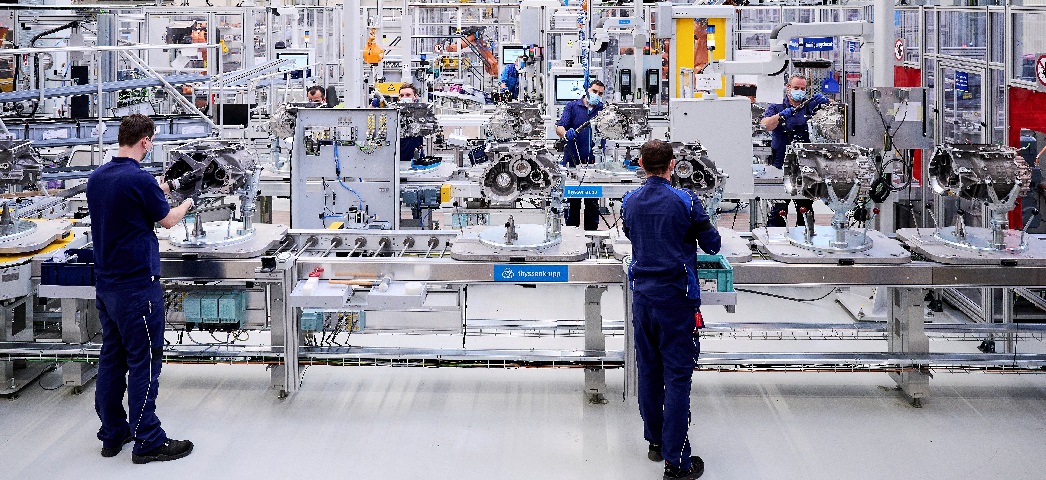
European lubricant demand will never recover to the level it reached in 2019, and while the COVID-19 pandemic accelerated the decline, decarbonization of the energy supply and passenger transport will solidify this effect over the long term, according to a consultancy.
Lube consumption in the region fell to 4.55 million tons in 2020, a drop of 9.5% compared to 2019, and will not recover to pre-pandemic levels, IHS Markit, a London-based consultancy, found.
“Although Europe’s lubricant demand decline was less severe than the impact of the pandemic on other refined product demand, lube demand in Europe is not ever expected to recover to the 2019 levels,” John Leavens, IHS Markit’s executive director for oil markets, midstream, downstream and chemicals, told the ACI’s European Base Oils and Lubricants conference held Nov. 17 in Amsterdam.
He added that the impact of the pandemic on European lubricant demand was much less severe than the aftermath of the financial crisis in 2008 and the subsequent demand drop in 2009. Total European refined product demand dropped 14% in 2020, compared to 2019, and is not expected to recover to 2019 levels, according to IHS.
Global lubricant demand, though, is expected to exceed 2019 demand by 2024, the firm found. Global lubricant demand reached 38 million tons in 2021, an 8% drop compared to 2019, and the impact of the pandemic on the global lubricant demand was less severe than the impact on total refined product demand, his said. Total global refined product demand dropped 12% in 2020, compared to 2019.
The pandemic had an impact on global refinery margins that reacted to the huge loss in demand in the first quarter of 2020. Faced with negative margins in a 14-month period, from May 2020 to July 2021, some refiners closed permanently while others shut down temporarily, IHS said.
Total closed its Gonfreville plant in northern France in April. The plant had the capacity to produce about 250,000 metric tons per year of API Group I oils and 39,000 t/y of Group III. Portugal’s Galp closed its Matosinhos refinery, which included a base oil plant with 150,000 t/y of Group I capacity. Other export-oriented refiners, like those in Russia, have not shut down but the pandemic reduced their base oil exports significantly.
“All refiners that remained in operation reduced crude throughput,” Leavens said. “As a result, the base oil plant throughputs were also reduced. It meant less vacuum gas oil for Group I base oil plants and limited production of Group II and Group III base oil where the feedstock is unconverted oil from a main-fuels hydrocracker and where the byproducts include unwanted diesel, kerosene and naphtha.”
He added that the drop in demand for refined products and drop in refinery margins decreased the global refinery utilization, which fell to 67% in April and May 2020 from about 82% in 2019.
IHS found that the refiners’ margins improved substantially in July 2021 as demand for main fuels, particularly jet fuel, improved. Because of the shortages, the demand for base oil was high during the COVID-19 pandemic, especially in the fourth quarter of 2020, leading to higher base oil prices and to very healthy profit margins, some analysts said.
In June and July 2021, Group I base oil prices were high enough to encourage additional Group I production, while main fuels demand recovered enough to allow for increases in refinery activity. Refinery processing increased enough to allow greater production of Group I base oils, Leavens said.
“In August and September 2021 Group I base oil prices continued to fall compared to crude oil and main fuel products,” he said. “This likely signals the end of the high base oil prices and margins seen since late 2020.”
IHS observed that in Q4 of 2021, Group I base oil supply normalized with more normal prices and relationship with crude and main refined products.
“The base oil prices are unlikely to return to early/mid 2021 levels, unless a further COVID outbreak causes another major drop in main product demand,” Leavens said.
The decarbonization of the energy supply in developed economies, like the European Union, will cause a long-term reduction of passenger car motor oil demand, IHS predicted. More and more countries are committing to reaching net-zero emissions by 2050, which is driving sales of battery electric vehicles and pushing plans for clean energy generation. EVs run by batteries use very limited amounts of lubricants.
“Due to the electrification of the light-duty vehicle fleet, we expect a long-term reduction of PCMO demand in advanced economies,” Leavens said. “However, heavy-duty diesel trucks are less able to be replaced by alternative energy sources, compared to light-duty vehicles, and this will lead to less impact on the HDMO demand.”
During this decade and beyond, the consultancy expects continued regulations for improvement in fuel economy of internal combustion engines and greater pressure for rerefining and utilization of used lubricants, which is seen as part of the circular economy and sustainable development of lubricant production.